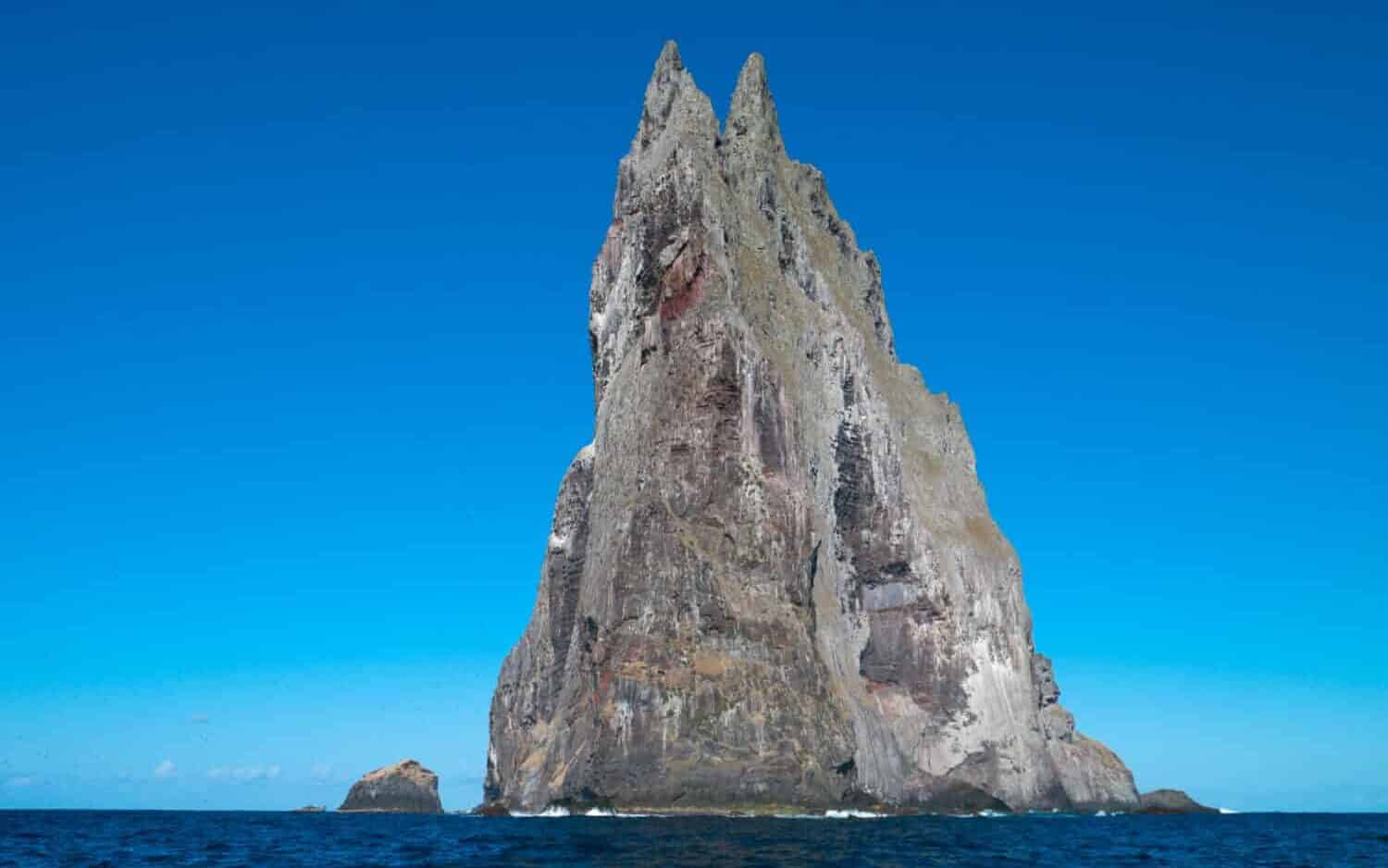It doesn’t occur very often, but sometimes extinct animals can “come back from the dead.” That’s what happened for the Dryococelus australis, commonly known as the Lord Howe Island stick insect. A tiny population of this endemic insect was discovered nearly 70 years after being declared extinct.
Now, scientists know that the only living group of Lord Howe Island stick insects cling to the side of a rocky island located in the Lord Howe Island archipelago group. The survival story of this giant insect is as amazing as these giant insects themselves.
The Rarest Insect in the World

The Lord Howe Island
stick insect
does look a bit like a lobster.
©Granitethighs/CC BY-SA 3.0 – License
Lord Howe Island stick insects are sometimes called tree lobsters and it’s easy to see why! Adult males of the species can measure up to 8 inches in length and weigh about 1 ounce. Females are 25% bigger than males. That is as big as an adult human hand! Nymphs, juvenile insects, are bright green. Their color darkens as they grow by shedding subsequent exoskeletons. Both adult males and females vary from a dark brown, reddish color to black.
Their body does look a bit like a lobster with a long, segmented tail, long legs, and lengthy, thin antennae. These insects are active at night and eat vegetation. Adults spend most of the day huddled together in groups hiding from predators.
Extinction
The Dryococelus australis lives only on the Lord Howe group of islands. This archipelago is located about 320 miles east of Australia in the Tasman Sea. Lord Howe Island is home to several endemic species. The Lord Howe Island stick insect was plentiful on the island before predators were introduced. Local fishermen even used the tree lobsters to bait their fishing lines.
Unfortunately, black rats hitched a ride to Lord Howe Island on a stranded ship in 1918. The rodents wreaked havoc on the ecology of the island. As the stick insect is flightless, it has no defense against terrestrial predators such as rats, which are not part of the natural ecosystem of the island. By the late 1930s, the rats had preyed upon the Dryococelus australis and 17 other insect and bird species to extinction.
Rediscovery
After nearly 70 years, scientists rediscovered an extremely small population of Lord Howe Island stick insects. They were not living in their original home. The Lord Howe Island archipelago consists of 28 islands, islets, and rocks. Balls Pyramid, as the name implies, is a pyramid-shaped sea stack jutting out of the ocean. It’s located 14 miles east of the main Lord Howe Island. Balls Pyramid is the tallest sea stack in the world rising more than 1800 feet from the surface of the sea.

Balls Pyramid is the only place to find the rarest insect on the planet.
©Ashley Whitworth/Shutterstock.com
In 2001, intrepid Australian scientists, David Priddel and Nicholas Carlile discovered a very hardy community of the formerly extinct insect. The two men and two assistants had to scale the sheer face of Ball’s Pyramid at night to hunt for the nocturnal giant insect.
A very small community of only about 25 individual stick insects cling to the steep rocky slope of the tiny, vertical Balls Pyramid. The insects are safe from predators as there are no land animals on Ball’s Pyramid, but the conditions are harsh.
Somehow, they’ve made their home on a small patch of melaleuca bushes, commonly known as tea trees. This is the only vegetation on Ball’s Pyramid. During the night, the insects nestle near the roots of the plant or into rock cavities near the shrubs. In the daytime, the melaleuca bush is the insect’s sole food source on the rocky islet.
Precarious Future
It’s amazing to discover a long-extinct animal is alive in the wild, but the road ahead won’t be easy for these hardy insects. Survival is still precarious for this critically endangered species. Scientists have removed several breeding pairs from the small population on Ball’s Pyramid to protect the future of the rarest insect on the planet. Pairs live in several zoos including Sydney and San Diego where scientists work to learn more about how to protect the species.
The people of the Lord Howe Islands, like populations on many other small islands around New Zealand and Australia, work to rid their island environment of rats once and for all. Successful eradication of rats would mean a possible reintroduction of the Dryococelus australis to their home on Lord Howe Island.
For now, however, the amazing Lord Howe Island stick insect is the rarest insect on the planet living in one of the most extreme places in the world.
The photo featured at the top of this post is © Juergen_Wallstabe/Shutterstock.com
Thank you for reading! Have some feedback for us? Contact the AZ Animals editorial team.







